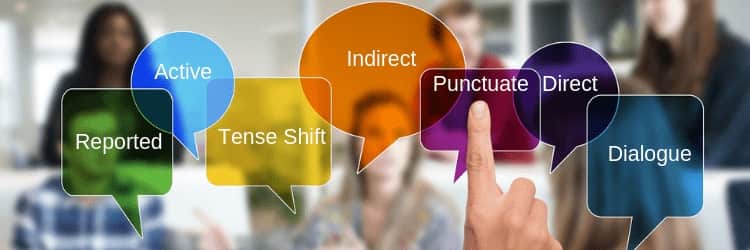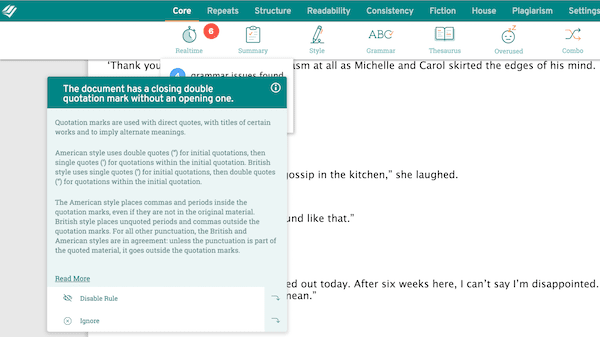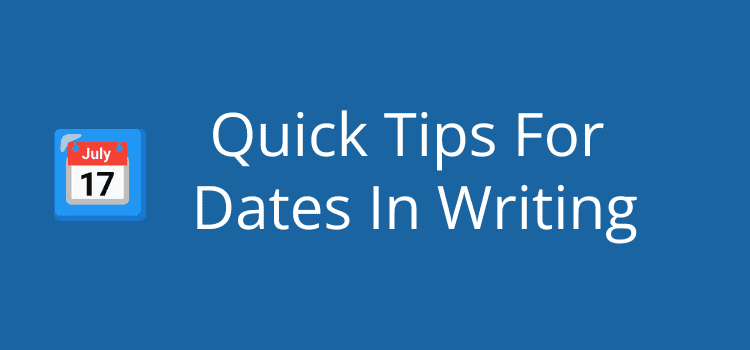
How do you write reported speech dialogue?
When you start to learn to write dialogue, it seems simple. All you need to do is add a reporting verb or dialogue tag.
You probably learned this in high school. When a character speaks lines of dialogue, you put a double quotation mark at the beginning and end.
But if you use reported speech, you need to include a tense shift.
What’s the difference between dialogue writing and reported speech?
Most dialogue uses active speech. It is what a character says directly, capturing the exact words.
Quotation marks usually set off this form of dialogue, which includes a variety of speech tags, such as he said or she exclaimed.
These tags attribute the words to the respective characters.
Active dialogue is immediate, allowing readers to experience the conversation as if they were present.
Reported or indirect speech, however, conveys what a character says but does not quote them directly.
Instead, it paraphrases their words, often without quotation marks.
The original speaker’s exact phrasing may change to fit the narrative style of the reporting character.
Reported speech often involves changes in pronouns, verb tenses, and time references to match the narrative context.
This form of dialogue helps summarize conversations when the exact wording is less important than the content of what was said.
Let’s look at the differences in more detail.
Direct dialogue
When you write dialogue, you usually use direct speech.
You use the exact words the character says and then add a dialogue tag to indicate who spoke the words.
“I’m going into town this morning. I should be back before dinner,” she said.
The reporting verb is almost always in the simple past verb tense, which is the general form for fiction writing.
It doesn’t matter which tense the dialogue is using.
It can be present continuous, present perfect, or present simple.
“I’m having friends over for dinner tomorrow night,” he said.
“I’ve had friends over for dinner quite often,” he said.
“I have friends over for dinner all the time,” he said.
You can also use the present simple tense for reporting verbs in some situations.
It is when you want to say that someone says something often or all the time.
“When I get older, I think I’ll travel the world,” she says.
“I’m going to buy a Ferrari one day,” he always says.
But you wouldn’t use the present dialogue form in most fiction writing.
Reported speech dialogue
In reported or indirect speech, you may not necessarily use the exact words of the speaker.
You can use it to convey small talk or gossip about what other people said.
Another use is to paraphrase long speeches or extended discourse.
You can use both past and present tense in reported speech. But again, the past is much more common.
She said she was going into town that morning and that she should be back before dinner. Past form
He always says that he is going to buy a Ferrari one day. Present form
With active dialogue, you need punctuation and quotation marks. But you write reported speech as a standard sentence.
You include the attribution and reporting verb without punctuation.
When you use the past form, you need to pay special attention to the tense shift.
No matter what tense the original utterance used, reported speech always uses the past.
It is because it is something someone said in the past. It is an action that occurred in the past, so we refer to it as a past event.
Tense shift examples
Compare the difference between these direct and indirect sentences.
I want to go to Norway.
He said he wanted to go to Norway.
She will pass her exam for sure.
He told me that she would pass her exam for sure.
They wanted to buy a new house but didn’t get the loan.
Tom told me that they had wanted to buy a new house but didn’t get the loan.
The general rule is that active speech in present or future tenses shifts back to the past simple.
When active speech is in the present perfect, it shifts back to the past perfect.
However, past simple active speech can shift back to past perfect or stay in the past simple.
In all forms, the relative pronoun, that, is optional.

Using reported speech within dialogue
When you incorporate indirect speech within a character’s dialogue, you need to keep the tense shift.
Here are some reporting dialogue examples.
“Have you seen Jillian lately?” Mary asked.
“Oh, yes. I saw her yesterday, and she told me that she was going to France next month,” Anne replied.
“I didn’t feel well this morning, so I called my boss to let him know. There is an important meeting this afternoon. But my boss said that it was okay and he would get someone else to take the minutes. I still feel guilty, though,” Jane said.
“I saw Michelle this morning, and she told me that she had been waiting for days for the results of her blood test. I’m not sure what’s wrong, but she looked worried,” Susan said.
As you can see in the examples above, the parts that are indirect retain the correct past form.
The rest of the direct written dialogue can be in any tense or form the speaker uses.
Punctuating your dialogue
There are five basic aspects of good dialogue punctuation.
1. All punctuation is inside the quotation marks.
These include full stops (periods), commas, question marks, and exclamation marks.
Jim said, “I’m not aware of it”. Wrong
Jim said, “I’m not aware of it.” Correct
“I don’t know what to think”, she said. Wrong
“I don’t know what to think,” she said. Correct
“Where did he go”? she asked. Wrong
“Where did he go?” she asked. Correct
“Get out of here”! he shouted. Wrong
“Get out of here!” he shouted. Correct
2. Using an em dash or ellipsis.
We use em dashes to indicate a speaker was interrupted. You add an ellipsis when a speaker’s words trail off, or when an utterance is incomplete.
“I was planning on buying–” she started.
“No way! I told you we need to save money,” he said.
“It’s funny when you think about things, and well …” Anne said.
“You think too much, Anne,” Mary said.
3. Start a new paragraph for a new speaker.
It is confusing for a reader if the dialogue runs on in the same paragraph.
When there is a new speaker in dialogue, always start in a new paragraph.
4. Quotation marks for long dialogues
Dialogues are usually short and sharp.
But you might have a piece of dialogue that is more of an oration, and you need to divide it into paragraphs.
You can use an opening and closing quotation mark for the whole dialogue.
Another option is to add one opening quotation mark at the beginning of each new paragraph and then close the final paragraph.
5. Don’t mix quotation mark styles.
It is up to you whether you use curly, straight, double, or single quotations.
In his novel, Cloudsteet, Tim Winton uses no quotation marks at all for the dialogue, but it is still great dialogue.
Generally, readers won’t mind what your choice is.
But they will be distracted or confused if you mix different types of quotation marks.
It isn’t an easy check as you are proofreading. But there is an easy way to make sure you are consistent.
Try using an online writing app to help you.
If you use Prowritingaid, you can check your whole manuscript by ticking Dialogue Tags Check in your combo settings.

For Grammarly users, you can find any errors in your Correctness tab.
It will show you any quotation mark inconsistencies.

Summary
Once you know how to write active dialogue and reported speech, it is easy to combine the two into reported dialogue.
Just remember that dialogue is active speech.
However, reported speech is indirect, so it always needs to use a backward tense shift into the past.
The most critical part of good dialogue writing is your use of correct and consistent punctuation.
When you get it right, a reader doesn’t notice it. They become blind to it.
But if you have inconsistencies, it stands out and can become annoying.
Related Reading: Are Question Tags Effective In Your Dialogue Writing?



